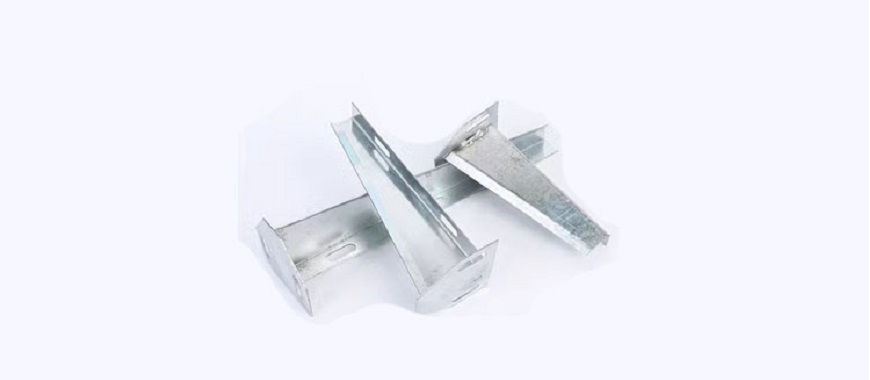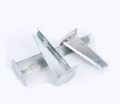
Cable trays are essential components in the infrastructure of electrical systems, particularly in industries like commercial buildings, manufacturing, and renewable energy projects. These trays help organize and protect the vast network of cables that power everything from machinery to telecommunications. Proper cable tray measurement is crucial for ensuring efficient cable management and long-term system performance. Without accurate measurements, cable trays may not accommodate the required cables, leading to potential safety hazards or maintenance challenges. By understanding the importance of precise cable tray measurement, you can ensure that the trays support your installation needs, prevent future complications, and maintain the integrity of your electrical network.
What are Cable Tray Sizes and How to Measure Cable Tray Measurement
Standard Cable Tray Sizes
When selecting the right cable tray, it is important to understand the standard sizes available in the market. Cable tray measurement includes dimensions like height, width, and thickness, which vary depending on the tray type and application. The most common tray types—ladder, channel, and ventilated trough—each have their own standard dimensions to fit specific installation needs.
- Width: Typically ranges from 100mm to over 600mm.
- Height: Ranges from 50mm to 500mm, depending on the cable load and space requirements.
- Thickness: Standard thicknesses include 1.2mm, 1.6mm, and 2mm.
For a more detailed reference, you can consult a Cable Tray Standard Sizes PDF, which provides an easy-to-read chart of these common dimensions.
Key Factors in Cable Tray Measurement
Height, Width, and Thickness
Proper cable tray measurement is influenced by the height, width, and thickness of the tray. The height determines the space available for the cables, while the width dictates how many cables can be housed. Thickness, on the other hand, is vital for the tray’s structural integrity, especially when heavy cables are used.
- Height: The tray must be tall enough to accommodate the cables without causing strain on the wires.
- Width: Adequate width ensures there is enough room for all cables to be safely installed and accessed.
- Thickness: A thicker tray may be necessary for heavier loads or for trays exposed to harsh environments.
Measurement in Inches
For users in regions that use imperial units, cable tray measurement is typically expressed in inches. This is the standard practice in countries like the United States, where cable trays are commonly measured using imperial dimensions. For example, cable trays often come with standard sizes, such as 12 inches in width and 6 inches in height. These dimensions are crucial when planning or installing cable trays, as they determine the tray’s capacity to accommodate cables safely and efficiently. It’s important to understand and use the correct measurements to ensure proper fit and functionality. Additionally, when working internationally or across different systems, accurate conversion between imperial and metric units is necessary to avoid errors in tray sizing and installation. Properly converting cable tray measurements is key to ensuring compatibility across diverse projects and regions.
Common Sizes
Some common cable tray measurement sizes include:
- Ladder trays: These are the most widely used type of cable trays, offering flexibility and easy cable access. Typical sizes for ladder trays range from 12, 18, 24, to 36 inches in width. These widths allow for various cable configurations, making ladder trays ideal for installations where large volumes of cables need to be managed, such as in industrial or commercial settings. The open design also promotes ventilation, reducing the risk of cable overheating.
- Channel trays: Channel trays are narrower and are commonly used in spaces where more compact and limited cable management solutions are required. They typically range in size from 6 to 18 inches in width. Channel trays are a good choice for smaller cable loads, offering a more streamlined, space-saving option while still providing necessary support for cables.
- Solid-bottom trays: These trays are designed for specialized installations where additional protection is needed for cables. They are often used in environments that require more protection from physical damage, contaminants, or environmental factors. Solid-bottom trays can be found in various sizes, tailored to the specific needs of the installation. These trays ensure that cables are securely housed, protecting sensitive wiring in challenging environments, such as in industrial plants or areas with high exposure to debris.
Each type of tray is selected based on the installation requirements, including cable size, environment, and load-bearing needs. Understanding the different tray sizes is essential for ensuring that cable management is both effective and safe.
Choosing the Best Cable Tray Segmented Solution for Projects
Cable Tray Sizing Calculation: How to Ensure Accurate Cable Tray Measurement
Cable Tray Sizing Calculator
To make the cable tray measurement process easier, many companies provide cable tray sizing calculators. These online tools are designed to simplify the task by helping you calculate the exact tray size needed based on several important factors, including the number of cables, the type of cables, and their total weight. By entering specific data into the calculator, such as the cable’s dimensions, quantity, and weight, you can receive customized recommendations for tray dimensions that will meet your needs and ensure optimal cable management. This eliminates guesswork and minimizes the risk of under-sizing or over-sizing the tray, which can affect the system’s efficiency and safety.
Additionally, if you prefer a more hands-on approach, you can find Cable Tray Sizing Calculation PDFs. These resources provide a step-by-step guide to help you perform the manual calculations needed to determine the appropriate tray size. They typically outline the process of calculating tray dimensions based on factors such as the total cable load, cable type, and required clearance for safe and efficient installation. These PDFs are particularly useful for engineers and designers who prefer a detailed, systematic approach to cable tray sizing, ensuring all variables are considered for an accurate and reliable solution.
Cable Tray Measurement Chart
Cable Tray Measurement Chart
A cable tray measurement chart serves as a helpful resource for quickly referencing the dimensions of various tray types. These charts typically list standard measurements for ladder trays, channel trays, and solid-bottom trays, which helps users easily determine the best tray option for their specific installation needs. For example, ladder trays might have dimensions such as 12, 18, or 24 inches in width, while channel trays generally range from 6 to 18 inches in width. Solid-bottom trays, which provide extra protection for cables, also come in varying sizes based on the application.
In addition to listing basic dimensions, cable tray gauge charts often account for important factors such as material type, load capacity, and environmental conditions. For instance, different materials (such as steel, aluminum, or fiberglass) may have slightly different dimensions or load-bearing capacities. Additionally, the chart may include considerations for specific environmental factors, such as whether the tray will be exposed to moisture, high temperatures, or corrosive substances. This makes the chart an invaluable tool for ensuring that the selected cable tray not only fits within the available space but also meets the required performance standards for the installation environment.
Electrical Cable Tray Measurement
For electrical cable installations, electrical gauge cable tray is essential to ensure the tray can properly accommodate cables of varying weights and sizes. Accurate measurement is crucial to maintain the integrity and safety of the electrical system. One important aspect to consider is the cable tray filling calculation, which ensures that the tray has the correct capacity to handle the cables without overloading. When measuring and selecting trays for electrical systems, it’s important to consider factors such as cable type, voltage rating, and the environment in which the tray will be installed. For example, high-voltage cables may require larger or sturdier trays to handle their weight and insulation requirements. Additionally, the environmental conditions, such as exposure to moisture, chemicals, or high temperatures, may dictate the use of specific tray materials like galvanized steel or fiberglass to comply with safety standards.
By thoroughly assessing these factors, you can ensure that the chosen cable tray not only supports the required cables but also adheres to relevant safety codes and performance standards, ensuring reliable and efficient cable management. Proper electrical cable tray measurement is thus an important part of both the design and installation process, ensuring that your system operates safely and efficiently over time.
Tips for Calculating How Many Cables Fit in a Tray
Step-by-Step Guide to Measuring Cable Trays for Accurate Cable Tray Measurement
Measuring for a Specific Installation
Accurate cable tray measurement begins with determining the right length, width, and height for your installation. Here’s how to measure:
- Length: Measure the total length where the tray will be installed, ensuring the tray will fit within the available space.
- Width: Based on the number of cables, determine the required width for the tray, leaving enough room for future expansion if needed.
- Height: The height should be sufficient to avoid cable strain and allow for easy cable management.
Tips for Accurate Measurement
When measuring cable trays, consider the following factors:
- Environmental Factors: Environmental conditions, such as temperature, humidity, or exposure to chemicals, should be considered when selecting the material and type of tray to ensure durability and safety.
- Type of Tray: Different types of trays (ladder, channel, solid-bottom) have different dimensions and load capacities, so choose the tray that best suits the installation needs.
- Number of Cables: The total number of cables that will be installed in the tray directly impacts the size and capacity required. Ensure that the tray is wide enough to accommodate the cables without overcrowding.
- Cable Entry/Exit: Consider the locations where cables will enter and exit the tray. Ensure the tray design allows easy access for both installation and future maintenance.
- Clearance for Installation and Maintenance: For ladder trays, ensure there is sufficient clearance between the rungs to allow easy cable installation and ongoing maintenance. This will help prevent tangling and facilitate efficient cable management.
- Cable Weight and Size: The size and weight of the cables being used will determine the required strength and dimensions of the tray. Heavier cables will need more robust trays with appropriate support.
Curved Cable Tray Bends for Complex Wiring Layouts
Common Mistakes in Cable Tray Measurement
Overlooking Future Needs
One of the most common mistakes in cable tray measurement is failing to account for future expansions or upgrades. It’s essential to select a tray that can accommodate additional cables or changes to the electrical system down the line. Overestimating the tray size may lead to unnecessary costs, while underestimating the size could result in a system that is too small to meet future demands.
Underestimating Tray Load
Another common mistake is underestimating the weight and volume of cables, which can lead to selecting trays that are too small or inadequately supported. It’s essential to accurately calculate the total load of all cables, including their weight, size, and any additional factors such as insulation. This calculation ensures that the chosen tray can handle the load without risking deformation or failure over time. Choosing cable tray measurements that doesn’t provide adequate support can result in poor performance, difficulty in installation, and even safety hazards, such as electrical faults or fire risks. To avoid these issues, always factor in the weight and volume of cables along with their environmental and operational conditions. Selecting a cable tray with the right dimensions and support ensures the cables are safely and securely managed, providing long-term reliability and compliance with safety standards. Proper load calculation and tray selection are crucial for maintaining both the efficiency and safety of the cable management system.
FAQs about Cable Tray Measurement
To measure the correct size of a cable tray, it’s essential to consider several factors, including the tray’s length, width, and height.
Length: Measure the available installation space where the tray will be placed. Ensure the length of the tray fits the area without obstruction, allowing enough space for future cable additions if needed.
Width: The width of the tray should accommodate the cables to be installed, factoring in the number of cables, their diameter, and any extra space required for airflow and easy cable management. It’s crucial to leave some room for future cable installations as well.
Height: The height of the tray ensures that cables can be easily placed and removed without bending or straining. Adequate height also prevents excessive weight from being placed on the cables, which could lead to damage or operational failures.
Weight and Cable Load: Be sure to account for the weight and load of the cables. For instance, heavy-duty cables like those used in power transmission systems will require a more robust tray than those used for light communications wiring.
For precise measurement, you can refer to cable tray sizing calculators or cable tray measurement charts to get the correct dimensions for your installation.
Cable trays come in various sizes to suit different installation needs. While the exact dimensions can vary by manufacturer, there are standard sizes commonly used across industries for various tray types, such as ladder trays, channel trays, and solid-bottom trays.
Width: Common standard widths range from 6 inches to 36 inches, with 12, 18, and 24 inches being the most typical for ladder and ventilated trough trays.
Height: The height of cable trays typically ranges from 3 inches to 18 inches, though custom sizes are available for specific installations. Higher trays are preferred in environments where cables are heavy or need more space for cooling.
Thickness: The thickness of the tray material is typically measured in millimeters (e.g., 1.2mm, 1.6mm). Thicker trays are often used in environments with heavy cables or in areas exposed to harsh conditions, such as outdoor installations or industrial settings.
Custom Sizes: Depending on the installation needs, trays can be customized in both dimensions and material. For example, some trays may be available with perforated sides for ventilation or solid bottoms for protecting cables.
To help standardize and simplify the sizing process, you can consult Cable Tray Standard Sizes PDFs and measurement charts provided by manufacturers or organizations.
The spacing between cables in a cable tray is crucial for proper cable management and ensuring that each cable is adequately supported. The recommended spacing typically depends on the type of cable being installed and the tray type.
Rung Spacing: For ladder-style cable trays, the rung spacing (the distance between horizontal supports) usually ranges from 6 to 12 inches. The standard rung spacing for most installations is 9 inches, but it may vary depending on cable size and type.
Cable Clearance: It’s important to leave enough clearance between the cables to prevent overcrowding and allow for proper air circulation. This helps to prevent cables from overheating and ensures that they can be easily accessed for maintenance or upgrades.
Cable Weight: Heavier cables require closer spacing to prevent excessive sagging or potential damage. Lighter cables, such as data cables, may require less space between them. Some cable trays feature adjustable supports to accommodate different cable types and loads.
Future Expansion: It’s a good practice to plan for future expansion when determining spacing. The tray should be sized not only for the current cable load but also to leave room for adding more cables down the line.
For specific guidelines on spacing, you can refer to cable tray measurement charts and installation standards from organizations like the National Electrical Code (NEC).
The National Electrical Code (NEC) outlines the installation requirements and safety guidelines for cable trays, ensuring that electrical wiring systems are installed safely and effectively. The primary article related to cable trays is Article 392, which covers the use of cable trays in electrical installations.
General Requirements: NEC Article 392 specifies that cable trays must be properly supported and securely fastened to avoid mechanical damage. The tray must also provide sufficient space for cables to prevent overheating, damage, and excessive wear.
Cable Tray Sizing: NEC also provides guidelines for selecting the proper tray size based on the type of cable being used. For instance, trays used to support single conductor cables must have a maximum rung spacing of 9 inches for cables sized between 1/0 AWG to 4/0 AWG.
Cable Separation: NEC requires that cables carrying high voltage (above 600 volts) be separated or installed with a barrier to avoid electrical interference or short-circuits. Cables rated for 600 volts or less may be installed together without a barrier, but still require appropriate spacing for safe operation.
Installation and Support: The NEC code stresses that cable trays must be installed in a manner that allows easy access for maintenance, ensures safety, and facilitates future upgrades. Proper supports must be provided to prevent strain on the cables, especially where trays bend or change direction.
For more detailed specifications, refer to NEC Article 392, which outlines the standards for cable tray installation and safety practices.

As the editor of GangLong Fiberglass, I have years of experience and in-depth research, focusing on cable tray products, fiberglass solutions, and grille systems. I incorporate years of industry insights and practical experience into every content, committed to promoting the progress of the industry. At GangLong Fiberglass, my commitment is reflected in every product, from innovative cable trays to durable fiberglass solutions and sturdy grille systems. As an authoritative voice in the industry, my goal is to provide valuable information to professionals and businesses and promote forward-looking solutions.


